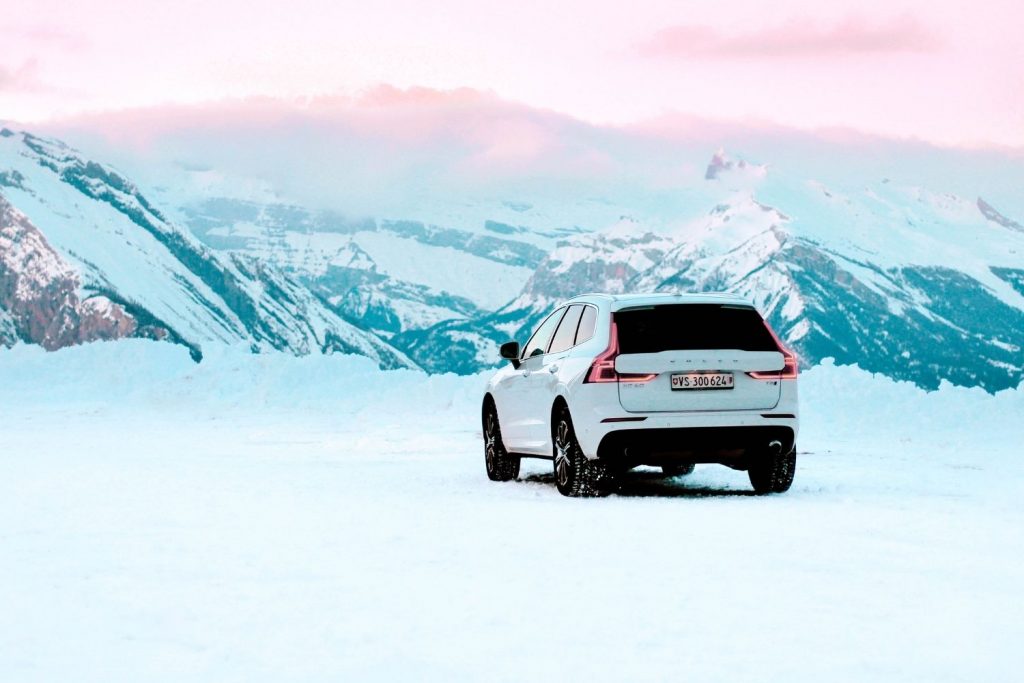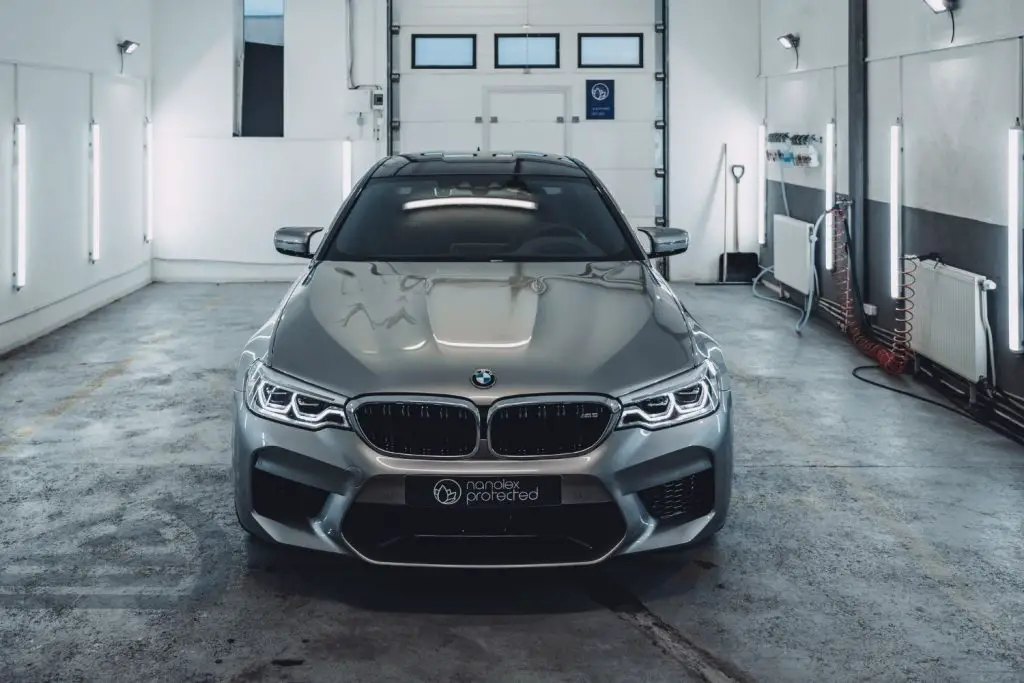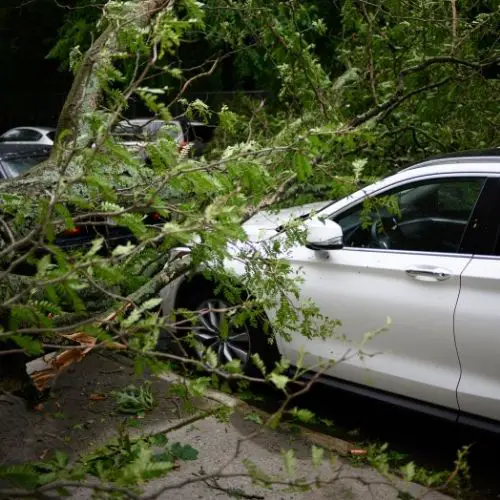We may get commissions for purchases made through links in this post. Thanks for the support! 👍
Cars need to warm up to get the engine running and fluid properly flowing. Your car needs about 30 seconds to warm up before driving off. While the interior of your car won’t be warm for several minutes, the actual engine doesn’t take all that long to get kicking.
Warming up your car in winter weather has been wisdom passed down from generation to generation. However, this information may be slightly outdated as cars 25 years old or newer do not need a long time to “warm-up.” Let’s take a look at all the things you need to know before starting this practice.

Step 1: Ensure your vehicle is in a safe spot
You should never attempt to warm up your car in a garage. The risk of carbon monoxide posing is very high when idling your car in a garage. Even if the garage is open, idling for a long time can be dangerous. When an engine is left running in an enclosed space, you risk fumes leaking back into the house.
Step 2: Use the defroster setting
When you first turn on your car after it has been sitting overnight in frosty weather, your windshield may be frozen. As the engine warms up, the defroster setting will help to clear the front and back windshields.
Step 3: Allow the engine to warm up for 30 seconds
30 seconds is typically all that’s needed for modern cars to warm up and get kicking. If it is very cold outside, you should allow up to two minutes to warm up your engine.
Step 4: Take it slow
While 30 seconds is all that is “technically” needed, you should still be cautious and take it slow for 5 to 15 minutes after driving off. Idling your car for an excessive amount of time is not good for the engine.
Taking it easy on the gas pedal for the first 5 to 15 minutes of driving will be much more helpful than idling. It is important to not overwork the engine in winter weather. You should give your vehicle time to reach normal performance and avoid the risk of overdoing it.
The reason why cars don’t need to warm up as long as they used to is thanks to the omission of carburetors. Since most cars nowadays run on combustion engines, the need for long warm-up times is no longer. Combustion engines use a mix of air and gasoline to set pistons in motion.
This powers the car’s function. Carburetors were previously used for the mix of air and gasoline. Since cold weather makes it more difficult for gasoline to evaporate, the carburetor had a risk of releasing a harmful gas-air mix. This gas-air mix would damage the engine.
However, with the phase-out of carburetors in the 80s, the concern of engine problems has disappeared. Carburetors are no longer used in modern cars (or trucks) and owning a car nowadays that has one is very rare.

Why It’s Important to (Briefly) Warm Up Modern Day Cars
Modern cars use electronic fuel injectors. The purpose of the fuel injector is to detect cold weather and release extra gasoline to compensate for the evaporation that occurs.
Therefore, as soon as the engine is running, it is safe to begin driving. When you excessively idle your car past this point, you are simply releasing extra gasoline into the engine and not making use of it.
It can be harmful to excessively idle your car for a variety of reasons. Let’s take a look at the risks of idling your car for a long time.
Engine damage
Engine damage can occur because extra unevaporated gasoline in the mix can strip the oils inside the engine. This will decrease lubrication and cause wear and tear inside.
Wasted Fuel
Idling your car unnecessarily wastes fuel. It is estimated that around 1 gallon of gas is wasted for every hour your car idles.
This of course hits the pocketbook quickly (especially in modern times), and isn’t necessary for modern vehicles that don’t have to warm up as much, and where it isn’t necessary.
Why do carburetor vehicles need to warm up?
As we know, carburetors are no longer used in most cars. However, if you’re lucky enough to own an old-school vehicle with a carburetor, you’ll need to warm it up for a little bit longer. This is because, in cold weather, gasoline doesn’t evaporate as easily. Therefore, the carburetor is at risk of not getting the right ratio and stalling the vehicle.
To avoid this, it’s important to warm up your engine for a minute or two before driving off.
While you technically only need to warm up your car for 30 seconds, it’s still important to be cautious and take it slow for the first few minutes of driving. This will help to avoid overworking the engine and damaging it.
Frequently Asked Questions
Is it necessary to warm up your car?
It isn’t completely necessary to warm up your car, however, your vehicle will run much better, last longer, and give you a better ride if you allow it a couple of minutes to be able to warm up before driving. Even then, you should allow a couple of minutes of driving before driving the vehicle hard to allow it to get all of the fluids where it needs to be.
Should you start your car when it’s cold out?
In short, yes. Starting your car when it’s cold out helps to warm up the engine and allows the oil to flow through all of the moving parts. Warming up your car also helps to avoid stalling or damaging your engine by giving it time to warm up before driving.
How long can a car sit without being driven?
It is generally recommended that you start and drive your car at least once a week to keep the battery charged and to keep all of the moving parts lubricated. However, if you don’t plan on driving your car for an extended period, there are some steps you can take to prepare it for storage. In general, you will start running into reliability issues once you have left your vehicle sitting for a couple of months to a year, due to dried-out seals and gaskets.
Conclusion
Since the phase-out of carburetors in the 80s, you don’t need to worry about fully warming up your vehicle before driving off. However, warming up modern-day cars is still important, especially in extremely cold weather since the oils that lubricate your engine won’t be in a fully liquid state.
Just make sure not to be excessively idle as this has proven to do more harm than good. You should aim to warm up your car for 30 seconds to 2 minutes, depending on the outside temperature. And then take it easy for the first 5 to 15 minutes of driving. Your car will thank you for it!
![This Is How Cars Have Wifi [And Why]](https://amanandhisgear.com/wp-content/uploads/2020/01/How-do-cars-have-wifi.jpg)

